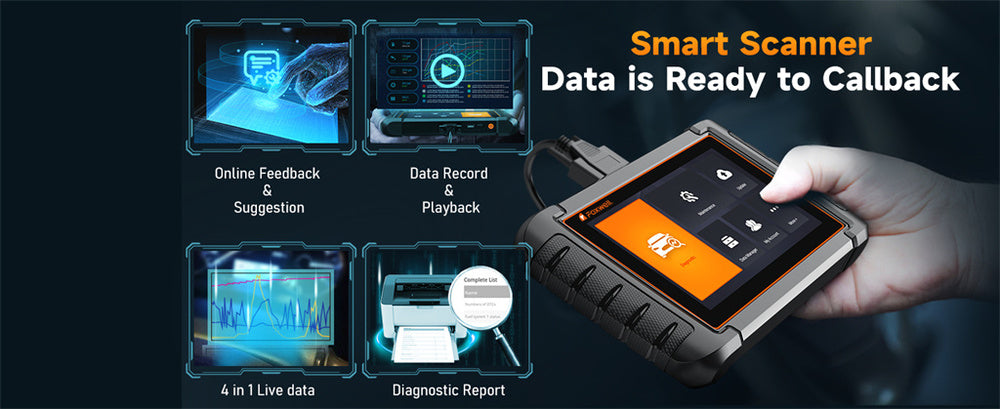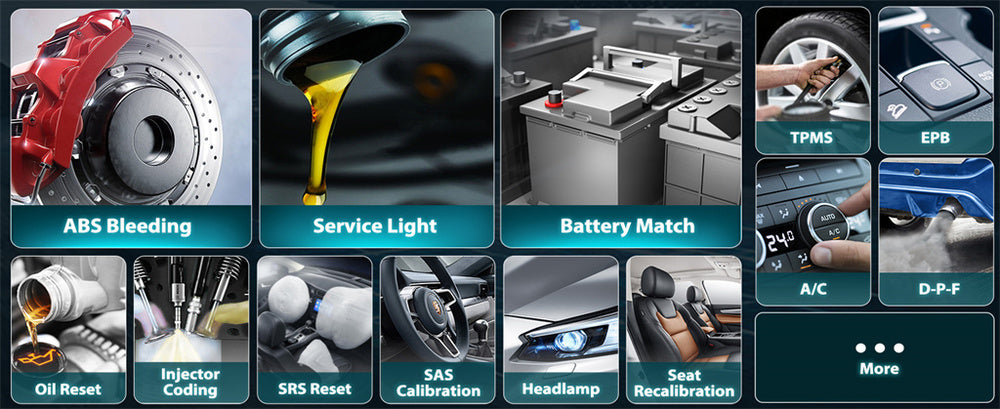When your car begins showing signs of electrical trouble--dimming headlights or dead batteries--you may suspect the alternator is to blame.
However, before visiting a mechanic immediately, you may wonder whether your OBD2 scanner can help diagnose the issue instead.
In general, yes, with certain caveats.
We'll explore how an OBD2 scanner such as Foxwell NT1009 can be used to inspect your alternator, along with steps involved in this process so you'll know whether it's in good health or needs attention at once.
Understanding the Role of the Alternator in Your Vehicle
Your car's alternator is an integral component of its electrical system. It acts like the heart in our bodies by pumping blood around.
By producing electricity to power various electronics such as headlights and radios, your alternator keeps everything in top working order.
Alternators don't last forever. Some telltale signs that an alternator could be failing include dimmed lights, slow engine start-up, or an outright dead battery.
Without the alternator's proper duties, your battery could quickly drain, leaving you stranded. Recognizing these symptoms early may save you more headaches and repair bills in the future.
Can an OBD2 Scanner Diagnose Alternator Issues?
An OBD2 scanner such as the Foxwell NT1009 can be invaluable when diagnosing alternator issues; however, its limitations must also be considered.
These tools read trouble codes stored by your car's computer when something doesn't function as expected, giving insight into what may be going wrong beneath the hood.
Detecting problems with alternators requires careful analysis. An OBD2 scanner won't directly tell you if the alternator is faulty.
However, it can identify related electrical issues, like low voltage (P0562) or problems in the field control circuit (P0622).
These clues can guide you toward determining if the alternator is the issue or if further investigation is needed.
Steps to Use an OBD2 Scanner to Check for Alternator Problems

Prepare Your Vehicle and Scanner
Firstly, prepare your vehicle by switching off electronics such as headlights and radio to avoid additional electrical load.
Locate the OBD2 port, typically beneath the dashboard near the steering wheel, and ensure your Foxwell NT1009 scanner is functioning as it should be.
Connect the Foxwell NT1009 Scanner
To connect the Foxwell NT1009 scanner, plug it into an OBD2 port on your vehicle, turn on its ignition, and allow enough time for its power cord to draw electricity directly from it.
Give it time to initialize and establish communication between itself and all systems within your car before testing begins.
Navigating the Diagnostic Menu
To access the diagnostic feature on a scanner, navigate its menu until you find its "Diagnostic" section and choose it. When asked, enter your vehicle make and model to provide accurate data.
Your scanner will communicate with your car's onboard computer. Its LCD screen will display any electrical issues.
Check Error Codes
Utilize the "Read Codes" function to locate any error codes that indicate alternator issues, including P0562 (System Voltage Low) or P0622 (Alternator Field Control Circuit Malfunction), which indicate your alternator may not be operating as intended. These error messages could indicate potential alternator malfunction.
Check Live Data for Voltage Output
The Foxwell NT1009 allows you to monitor live data, which is essential for tracking an alternator's performance. Simply start your engine and watch for voltage readings as soon as they appear.
An optimal alternator should produce between 13.5 and 14.7V. Any drop below this range could indicate improper battery charging, while excessive charging could overburden systems, creating other potential issues.
To further assess the alternator, plug in various electrical accessories, such as headlights and the air conditioner, to test how it handles an increased load.
Signs of voltage dropping under load could indicate an ineffective alternator.
Take Advantage of Special Testing Functions
The Foxwell NT1009 also provides specific tests for your vehicle's charging system.
By choosing the 'Charging Test' feature, you can gain a detailed report on the health of your alternator, battery, and starter. It also performs load tests to simulate real-world conditions and assess performance under stress.
Analyse and Respond
You can ascertain its functionality by interpreting and acting upon the results retrieved from your alternator data and codes.
If all readings fall within normal ranges, your alternator is probably functioning appropriately; otherwise, if voltage readings consistently range low or high, this indicates repair or replacement is required.
Using your scanner can clear any error codes left after making repairs.
Unplug and Store the Scanner Properly
Once your diagnosis has been completed, stop your engine before safely unplugging the Foxwell NT1009 from its OBD2 port. Store it away to ensure its readiness for future use.
Alternative Methods to Test Your Vehicle’s Alternator
If the OBD2 scanner cannot provide definitive answers, other means exist for testing your alternator.
A multimeter is an efficient and straightforward approach—simply connect it to battery terminals while running the engine; readings between 13.5 and 14.7 V indicate proper alternator functioning.
A load test provides a more in-depth examination, using either a particular tool or professional mechanic, to gauge how well an alternator performs when the vehicle's electrical load increases.
This test measures its ability to provide consistent power when increased electrical loads come onto its circuits.

Conclusion
While an OBD2 scanner like Foxwell's NT1009 is invaluable for identifying alternator issues, it shouldn't be seen as your sole solution.
While it provides valuable insights through live data feeds and special testing features, additional testing may still be necessary in certain instances.
OBD2 scanners serve as an initial line of defense against car issues, helping detect problems early and providing enough data to decide whether you can repair it or need professional assistance.
With regular use, Foxwell NT1009s can keep your electrical system under control and help avoid unexpected breakdowns or costly repairs.
FAQs
Can you test an alternator with an OBD2 scanner?
Yes, an OBD2 scanner can help you test an alternator by reading trouble codes and monitoring live voltage data. However, it may not give a direct diagnosis, so you might need to combine it with other testing methods for a complete assessment.
Will a bad alternator show up on a scan?
A bad alternator can trigger related trouble codes on a scan, such as low system voltage or issues with the alternator's circuit. While it won't specifically say "bad alternator," the codes can indicate a problem that requires further investigation.
Is there an OBD code for alternator?
Yes, there are OBD codes that relate to alternator issues. Common ones include P0562 (System Voltage Low) and P0622 (Alternator Field Control Circuit Malfunction), which can signal that your alternator isn't working properly.




Leave a comment
This site is protected by hCaptcha and the hCaptcha Privacy Policy and Terms of Service apply.